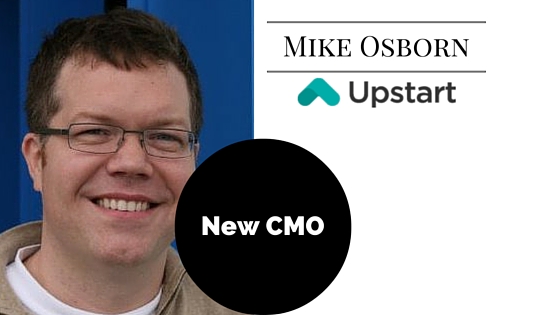4 ways financial companies are targeting millennials
Many financial companies are searching for new ways to market to millennials. It makes sense: as millennials age, they have a growing appetite for financial services. Fintech startups are particularly adept at marketing to millennials because many of these companies were founded and run by people in the same demographic. Companies are acquiring customers through online marketing online, but some are finding that going old school and offline is a surprising way to grab a millennial’s attention.
Here are a few ways companies are reaching out to millennials, both online and offline:
Oscar
Oscar is a new type of health insurance company using technology as a means of simplifying the healthcare system and making it more accessible online, as well as at a lower cost. The company has raised over $300 million to date. Oscar’s been advertising in subway stations in New York since October 2013, before expanding its reach to New Jersey, in an attempt to raise more awareness of the company.
In a quote to Adweek, VP of Marketing at Oscar, Veronica Parker-Hahn said: “We knew we needed a way to drive awareness of Oscar, but we didn’t have the money and we weren’t quite ready to dive into the pool of TV.”
Through eye-popping, colorful and cute ads, Oscar speaks to millennials of its accessibility through technology – you can even interact from a couch at home. The company offers an easy-to-manage website, app and even perks and rewards for staying physically active through a free health tracker.
Wealthfront
Wealthfront uses TV ads to publicize its low-cost, automated, online investment management services. Through goofy, scripted skits, Wealthfront manages to target millennials during their favorite TV shows on Comedy Central and when their favorite sports games are on commercial break. The commercials have aired most recently on sport channels like Pac-12 Network, during college football games this past fall. This way, Wealthfront can reach the young (and mostly male) population it’s targeting. The 30-something bros starring in its ads may be representative of their target audience of mostly 20- to 30-somethings (the focus on men might have been a good thing as many women commenting on the video were aghast that the men knitting didn’t actually know how to knit).
The roboadvisor built its investor base by targeting newly-minted millionaires from big tech firms, like Twitter and Facebook. The company employs many of the same type of people it aims to land as clients and has made some high profile hires like Andrew Johns as VP of Growth. Johns, who graduated college in 2006, spearheaded growth initiatives at companies like Quora, Twitter, and Facebook.
Upstart
Upstart, a company that bypasses traditional lending models to extend loans to people without an extensive credit history, also targets millennials. Upstart believes that to stand apart from the soup of ads streaming in through social media and online channels, it needs to take a noticeably different course.
Upstart’s Chief Marketing Officer, Mike Osborn, thinks direct mail is a better way to get his prospects’ attention:
“When we think about where we’re going to find our next customers, we’re definitely looking at the offline opportunity. We’ve been positively surprised in volume and profitability with offline channels. When you get an email offer to refinance your debt, it’s pretty easy to ignore it. But when you get your credit card statement in the mail and a couple of days later, receive an offer to help pay it off, the offer has relevance and timeliness when it comes via direct mail.”
And he should know — his last job was on the marketing team at Uber, a company renown for marketing well to millennials. The marketplace lenders, like Lending Club and Prosper, continue to invest in direct mail, sending tens of millions of pieces every month via the mail, according to the WSJ.
Bank of America
Bank of America has been using Pinterest as a social media platform to reach out to the millennial generation.
To prepare for its social media campaign, the 2nd largest U.S. bank in terms of assets created Better Money Habits (BMH), a website with rich personal finance content for its target group. The company used Promoted Pins on Pinterest to creating digital image with pinpoints, each linking back to their pool of resources on BMH. Pinterest shows these Pins to users based on their search terms and Boards that have a personal finance bent, like buying a home, saving for a vacation, and wedding planning.
Besides being the social media platform with the fast growing percentage of millennials using it, Pinterest is primarily used by women (85% of users). Bank of America is targeting its messaging using digital pictures to connect with millennial women, like pins about wedding dresses titled “Save your way to the perfect dress”. “We are utilizing Pinterest as a visual search engine to reach consumers with the right message at the right time and tailoring our content to what consumers are searching for most often,” said
Photo credit: TheeErin via VisualHunt.com / CC BY-ND
5 trends we’re watching this week
[alert type=yellow ]Every week at Tradestreaming, we’re tracking and analyzing the top trends impacting the finance industry. The following is a list of important things going on we think are worth paying attention to. For more in depth trendfollowing, subscribe to Tradestreaming’s newsletter .[/alert]
1. Vanguard’s virtual RIA adds $10 billion in net new assets over last six months (RIABiz)
2. Invesco buys roboadvisor for advisors, Jemstep (ThinkAdvisor)
3. BBVA Compass to intro robo offering via partnership with BlackRock’s FutureAdvisor (Finovate)
4. Tech leaders and fintech: Why Amazon and Google are bound to enter finance (Disruptive Finance)
5. An ex-Uber marketing pro weighs in on the Uberization of money debate (Tradestreaming)
An ex-Uber marketing pro weighs in on the Uberization of money debate
[dropcap size=big]W[/dropcap]hile the stock market opened 2016 with a loud plop, the hottest companies continue to be technology startups. Atop this pile sits Uber. Uber has become synonymous in tech circles for how easy buying things really can be and how enjoyable the experience can be, as well. If the taxi industry can be Uber-ized, the thinking goes, so can many large industries that have similarly been slow to change.
This conversation hit finance circles when the WSJ ran a story about how slow the finance industry has traditionally been in adopting best practices that have influenced the buying cycle in other industries. According to the article’s author, Zachary Karabell, head of global strategy at Envestnet, finance is indeed now undergoing its own Uber process. Not overnight or over weeks and months, but over the next few years, major parts of finance will undergo technology-driven disruption. And this change is being driven by fintech startups, like Wealthfront, EquityZen, Loyal3, and ZestFinance.
Whatever the risks, however, the Uberization of finance is no fad or stunt. Many of today’s startups may implode, as most do, but the spread and democratization of capital—and the proliferation and analysis of data—are irresistible trends. They will offer new opportunities to millions of people, entrepreneurs and investors alike. They also will unlock a vast amount of money, energy and talent, and to that we simply should say, bring it on.
Not everyone buys this line of thinking. Cornerstone Advisors’ Ron Shevlin explains that there isn’t really a parallel to the financial industry because this whole discussion is based on a misunderstanding of what Uber has really done. Uber pursued a consolidation strategy in a highly fragmented industry. The WSJ cites marketplace lending and crowdfunding as examples of uberization but rather than consolidate, these new forms of finance add to the fragmentation of the finance industry.
An Uber exec weighs in
Upstart, an online lender targeting millennial borrowers, is typically used as an example of the disruptive change that’s happening in finance. In order to lend to young adults, Upstart had to turn traditional lending models on their heads, as many of these FICO-like credit scores rely on historical data. As young people find their places in the gig economy, it’s not easy for them to get loans. Upstart’s forward-looking models are trying to change that. Young borrowers don’t have very much credit history, so Upstart uses other inputs to determine creditworthiness for its customers.
Mike Osborn joined the startup finance company recently as the company’s first CMO. Hailing from the marketing team at Uber, Mike joins a firm that’s generated $240M in originations in 18 months since it launched, averaging 25% month to month growth since inception (you can listen to Tradestreaming’s interview with Upstart founder and ex-Googler David Girouard below).
Osborn has a quick 3 point questionnaire when testing for Uberization:
- Is this an industry ripe for disruption?
- Who’s the disruptor?
- How will it be disrupted?
Finance fits this model, and to Osborn, much of the change is going to happen from the bottom up — with changes in consumer usage patterns brought about by top UI/UX in new finance apps and platforms. “When you think of what drives user experiences, in Upstart’s case, it’s about having better holistic models, better rates, different options — all with the view that we’re helping our users out of a jam,” Osborn explained.
In this vein, next generation finance tools should resonate with users and generate the same reactions as other apps residing on their smart phones. Why shouldn’t users have the same visceral responses to their banking apps that they do to their transportation apps?
“When your target audience are millennials, they live and breathe online and they do it in a community-driven way. Financial service providers need to find ways to get their users financially fit and package it into a shareable experience and celebrated event — the same way getting physically fit is. When someone loses a lot of weight and gets in shape, they take a before-and-after picture and post it socially. I can imagine the same thing happening before and after a difficult credit card situation.”
Growth hacking new accounts online and offline
Perhaps ironically, many of today’s online financial services startups rely on offline methods to acquire new customers. It’s especially acute when it comes to landing new borrowers, as two of the largest online consumer lenders, Lending Club and Prosper, each send tens of millions of offers via snail mail every month. Upstart’s Osborn embraces both online and offline acquisition marketing.
“When we think about where we’re going to find our next customers, we’re definitely looking at the offline opportunity. We’ve been positively surprised in volume and profitability with offline channels. When you get an email offer to refinance your debt, it’s pretty easy to ignore it. But when you get your credit card statement in the mail and a couple of days later, receive an offer to help pay it off, the offer has relevance and timeliness when it comes via direct mail.”
Same goes for social media marketing. Osborn claims that a Facebook response is either immediate or it disappears into the ether. That’s not to say Facebook isn’t fertile ground to message new prospects — it just needs to work quickly. Same goes for Google and search engine marketing. “The economics on Google work but we’ve been most positively surprised with direct mail,” Osborn reasoned.
If finance is being Uberized, where’s the pressure coming from?
It’s debatable whether the disruptive change everyone’s talking about is supply-side or demand-side driven. Osborn thinks it’s actually a confluence of factors that’s enabling the next generation of financial services, technologies, and apps racing to get a foothold with today’s customers.
- Consumer-led: The changes happening in the industry right now are implicitly lead by the consumer. People are demanding change. When every experience looks like an Uber experience, you get what you want and begin to expect more. You don’t want to have to go through all the hoops and paperwork associated with traditional financial services.
- Technology-driven: A lot of the change that’s happening in online lending is coming from changes in capabilities. Now, at Upstart, the firm has the power to make credit decisions using so many different signals — like what grades a prospective borrower got in college. These borrowers were previously shut out of the market if they were judged solely on historical credit models.
Osborn believes it takes a new type of company and leadership to be able to compete today — both require an understanding of big data and large systems. “When I first met with Dave and the rest of the leadership team, founded by Googlers, I saw they understood the power of taking in all that data and making wise and powerful decisions, like extending credit, with it. There’s a reason we have such good ratings on CreditKarma and high NPS scores with our customers.”
Whether financial services are actually being Uber-ized misses what’s really going on. Led by technology advances and driven by customer demand, startups and incumbent institutions are changing the way users interact with money.
Photo credit: FamZoo via Visual Hunt / CC BY-SA
Online lender, Upstart hires Mike Osborn as Chief Marketing Officer

Reworking traditional credit models to extend loans to people without years of credit history is a big undertaking, but it doesn’t appear too big a challenge for online lender, Upstart. In the 18 months Upstart has been participating in lending online, it’s generated $240M in originations, averaging 25% month to month growth since inception.
Now, the company is further investing in growth with the appointment of CMO, Mike Osborn. Osborn comes to Upstart from Uber, where he was the Head of Growth Marketing, responsible for all digital and offline marketing, as well as product management of Uber’s adtech and consumer promotions platforms. This is Upstart’s first hire as CMO and it’s a key role impacting the future of the firm. As founder Dave Girouard wrote on a blog today, “Without the ability to attract quality borrowers to a lending platform in a scalable and cost efficient manner, the rest will be for naught.”
Online lending is about assessing creditworthiness and managing risk. The complexity of that job is compounded when you extend credit to people who may not have a lot of credit history, like Upstart does. Instead of peering backwards into a prospective borrower’s experience with debt in an effort to forecast it forward, Upstart uses predictive metrics, like job history and education, to determine creditworthiness. Osborn’s role will encompass all performance and brand marketing for the Upstart lending platform.
It’s kind of an arms race right now in the online lending space where Upstart finds itself. Both marketplace lenders and balance sheet lenders are aggressively spending on borrower acquisition. A recent WSJ article described the old-school direct marketing tactics employed by firms like Lending Club and Propser. Both firms sends tens of millions of pieces of direct mail each month to acquire new borrowers. Upstart’s Osborn will have to use his growth marketing experience to further ramp volumes.
[x_author title=”About the Author”]
Investing in people with potential — with Upstart’s Dave Girouard
What if you’re a recent Stanford college grad with a computer sci degree and need to borrow money? (crickets)
What if you’re an investor and would like to be able to loan to these (future) high performers? (Upstart…)
Dave Girouard, co-founder and CEO of Upstart, joins us on the Tradestreaming Podcast today to talk about how his firm is enabling lending to — and investing in — young, high potential people who haven’t had enough time to build out a long credit history.
Listen to the FULL episode
About Dave Girouard
 Dave is the co-founder and CEO of Upstart.
Dave is the co-founder and CEO of Upstart.
More resources
Even More Resources













